The British journalist, editor and cycling activist Carlton Reid is in the process of finalizing a "massive free e-book" due for publication this Spring at http://www.roadswerenotbuiltforcars.com/. His book provides valuable  historical background on how we in Britain and the United States got into the present no-choice single-mode road systems that have provided the authoritarian main model for the fast (and less fast) developing countries as they rush to urbanization. The lessons of history, if learned, can, we are told, help us better understand the present and on that firm base decide what we wish to become in the future. So with thanks to Carlton Reid let's see if we can learn this particular hard lesson from Britain:
historical background on how we in Britain and the United States got into the present no-choice single-mode road systems that have provided the authoritarian main model for the fast (and less fast) developing countries as they rush to urbanization. The lessons of history, if learned, can, we are told, help us better understand the present and on that firm base decide what we wish to become in the future. So with thanks to Carlton Reid let's see if we can learn this particular hard lesson from Britain:
Ministry of Transport started one so why doesn’t Britain have a Dutch-style bike path network?
If the Second World War hadn’t intervened, Britain might now have a dense network of Dutch-style segregated bike paths. Or, at least, such a segregated network was the ardent desire of motoring organisations, leading police officers, the Ministry of Transport, county council officials and the majority of other witnesses who gave evidence to an influential parliamentary committee in 1938.
Powerful representatives of Britain’s two million motorists wanted to drive faster, and Britain’s 12 million cyclists were in the way. Cyclists ought to be compelled to use bike paths when provided, argued organisations other than cycling ones.The first bike path in England was built in 1934, a 2.26 mile stretch of uneven concrete from Hangar Lane to Greenford Road in Ealing, London, kept separate from, but adjoining, Western Avenue. A cinema news snippet from British Pathé said the Western Avenue cycle track was “a new safety innovation” and that “motorist users of the road will be equally appreciative of this new boon.” A large crowd witnessed Leslie Hore-Belisha, the new Minister of Transport, cutting the ribbon officially opening the experimental “cycling track.” (The dedicated track disappeared years ago and cyclists, where provided for at all on this stretch of the A40, are expected to share the slim footway with pedestrians).
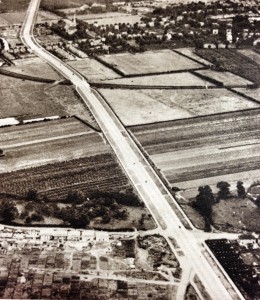
1930s ‘cycle tracks’ on both sides of the Great West Road in London.
At the opening, Hore-Belisha said the cycle track, created at the behest of previous Minister of Transport, was for the “comfort and safety” of cyclists. Hore-Belisha was no fan of cycling: he believed cyclists were “the most dangerous people on the roads today” and, in parliament, when Viscountess Astor asked whether a “system could be devised to prohibit pedal cycling in very crowded areas?” he answered “I quite appreciate her humanity of view.” Opposition to the Western Avenue path came from both the Cyclists’ Touring Club and the National Cyclists’ Union, forerunner to the British Cycling Federation. The Perils of the Cycle Path, a CTC leaflet from 1935, made it plain that cyclists did not want to be fobbed off with sub-standard bike paths and feared being compelled to use them. Hore-Belisha described cyclists as “hysterical prima donnas.”
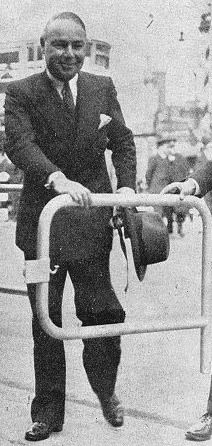 But it wasn’t just cyclists who thought the 8ft6in wide path on Western Avenue disjointed and bumpy. The AA, the RAC, the police, and many others, also said the experimental bike path was poorly executed. Better ones should be provided, were “segregation” to be compelled by law, the Alness parliamentary committee was told and when the Alness report was published one of the chief recommendations was that cyclists should be provided with wide, well-surfaced cycle tracks, separated from fast-moving motor vehicles.
But it wasn’t just cyclists who thought the 8ft6in wide path on Western Avenue disjointed and bumpy. The AA, the RAC, the police, and many others, also said the experimental bike path was poorly executed. Better ones should be provided, were “segregation” to be compelled by law, the Alness parliamentary committee was told and when the Alness report was published one of the chief recommendations was that cyclists should be provided with wide, well-surfaced cycle tracks, separated from fast-moving motor vehicles.Transport minister Leslie Hore-Belisha opening an experimental gate which would open to let pedestrians cross a road.
Despite CTC and NCU opposition to the uneven Western Avenue cycle track, often crowded with pedestrians, the Ministry of Transport ordered more cycle tracks to be built in the five years that followed. By 1938 forty-five miles of new arterial roads had bike paths running beside them, with a further sixty-eight miles “under construction.” England’s bike path network was growing and, with Ministry of Transport funding, likely to grow further. The Alness report recommended that building of a fully segregated transport network should be accelerated, with cyclists and pedestrians given protected slices of the newly minted highways. This protection was mooted in order to reduce the startlingly high death-toll on the roads. A death toll that JS Dean, chair of the Pedestrians’ Association, later described as ‘Murder Most Foul’. The House of Lords committee, chaired by Lord Alness, published its findings in March 1939; in September war was declared. The construction of a national network of ‘cycle tracks’ was halted.
Post-war austerity prevented the resurrection of the plans. Not that there was much to resurrect. Bike paths built in the early 1930s – like many of those of today – were often poorly surfaced, used also by pedestrians, didn’t form a usable network and cyclists had to give way frequently, interruptions that increased as more and more housing and industrial developments took place beside the new arterial roads. Expensive clover-leaf intersections for motorists could be designed and budgeted for but similar intersections for cyclists would be “impossible” or “too costly”, town planners told the six peers on the Alness select committee. (The AA submitted plans to the Alness committee which had underpasses and other bike path features the like of which only started to become commonplace in the Netherlands from the 1970s). In evidence given to the committee, witness after witness – from surveyors to arch motorists – attested to the dire nature of England’s experimental bike paths but, apart from cyclist witnesses, most wanted cyclists to be forced to use the paths.
The peers on the committee – the Earls of Iddesleigh and Birkenhead, and Lord Brocket, Lord Rushcliffe, Lord Addison and Lord Alness – made frequent mentions of their love of motoring when questioning witnesses. As can be seen in the 662-page transcript of the evidence given to the committee (see below), there was palpable excitement from the peers at the prospect of German-style autobahns being built in Britain – free of cyclists, pedestrians and animals – and frustration when cyclist and pedestrian groups said they weren’t too keen on ordinary roads being made into “race tracks for motors”. Lord Brocket didn’t fancy being forced to drive at a certain speed: “I drive a lot and I must admit that I regard the speed [limiting] device as being very dangerous.”
Lord Alness asked almost every witness about England’s “experimental” bike paths, especially ones beside London roads he knew well, the Western Avenue and the Great West Road.
London’s Great West Road was built, in stages, from 1920 and between 1936 and 1937 stretches were made into a dual carriageway, with two 23-foot carriageways and a 9-foot ‘cycle track’ at the edges, both sides of the road. According to the Ministry of Transport only half of the cyclists on the Great West Road used the cycle track. Why? The track was “inferior”, said the police. The surface was poor and many pedestrians used both the footway and the cycle path.
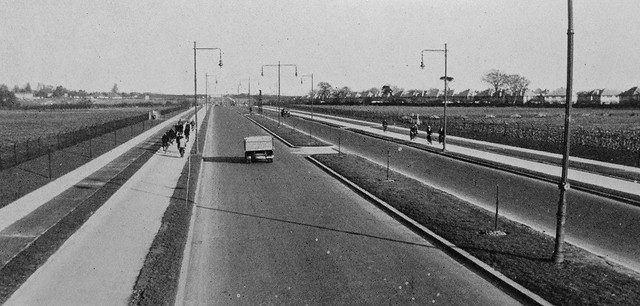
The Ministry of Transport had specified that the minimum width of a cycle track should be 9ft. Planners routinely ignored this and, when road widenings took place, they nibbled away at the space given over to cyclists and pedestrians. Wide, well-surfaced bike paths – such as the one above, beside Chertsey Road, a bypass of Twickenham or this concrete 1930s bike path at Neville’s Cross, near Durham – were usually narrowed to make more room for motor vehicles. This was despite the fact there were many more cyclists than motorists on Britain’s roads at the time. Cycling was booming. Six million more people had taken to riding bikes since 1928. This fact “staggered” Lord Alness. Cyclists were largely “proletarian”, said one Lord in the debate launching the Alness report of 1939, and were not deemed to be as valuable to the economy – or the war effort – as motorists. (In the 1930s the motor industry was especially cosseted because it was expected that car production would be shifted to military vehicle production; bicycle factories, such as the Raleigh plant, were also converted for armaments production but Sturmey Archer gears couldn’t power tanks. And, roads, unlike the railways, couldn’t be brought to a standstill by powerful unions).
In evidence given to the Alness committee, the Cyclists’ Touring Club stressed that its main objection was to the quality of bike paths and not just the principle of being able to continue riding on the carriageway, the hard-won right of cyclists since 1888. The CTC feared that legislation would be brought in that would make it compulsory to use cycle paths even before a useable network of cycle paths had been built, and that going by the poor provision of paths in the previous five years, there was little likelihood that the paths of the future would be of a decent quality.
George Herbert Stancer, secretary of the CTC, said:
“If the paths are by any miracle to be made of such width and quality as to be equal to our present road system, it would not be necessary to pass any laws to compel cyclists to use them; the cyclists would use them.”
The Earl of Iddesleigh asked: “You think that the cyclist is being offered an inferior article?”
Stancer was certain of it: “A very much inferior article, my Lord.”
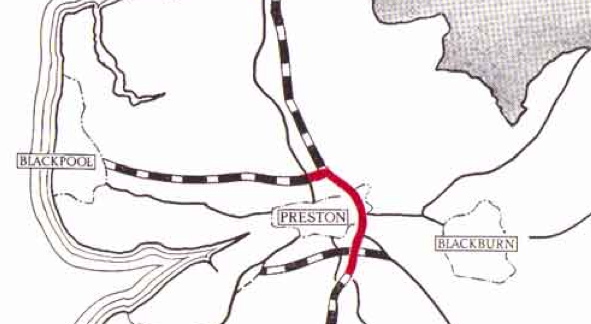
Preston By-pass, Britain’s first motorway.
The Alness Report was published in March 1939. It was heavily biased towards motorists. The report made 231 recommendations, including that children of ten and under should be banned from public cycling, and that segregation on the roads should be carried out with utmost urgency. Cyclists, said the report, should get high-quality wide cycle tracks and that, once built, cyclists should be forced to use them. Pedestrians were also to be corralled and fined for daring to cross the road at points other than designated crossing points. Motorists, decided the motoring Lords, should be treated with a light touch by the law and should be provided with motorways and many more trunk roads. “Courtesy cops” would make sure motorists acted like gentlemen rather than cads.Then war intervened. The Alness report – derided by a Labour MP as a “tale of deaths and manglings…and extraordinary conclusions” – was moth-balled. After the war a House of Commons select committee dusted it down. In a parliamentary discussion of the dusted-down report Lord Sandhurst remarked:
“One of the bugbears of cycle tracks in this country, and one of the things that keep cyclists off them, is that tracks are continually crossing drives into houses. The track suddenly dips, almost bumping the cyclist out of his seat; then it rises on the other side, and throws him into the air. When the Swedes come across a thing like that, they take the cycle track, away from the road altogether, to the back of the house. When they come to a steep hill they run the cycle track round it, and do not ask the cyclist to sweat and push his way to the top.”
Many of the Alness report recommendations were taken forward, especially the pro-motoring bits, but, for a while at least, there would be no new roads and certainly no provision of bike paths. Post-war austerity killed off putative plans for a national network of cycle tracks. But while there would be no building of bike paths, post-war politicians were still urged to get cyclists off the roads “for their own safety”, even though cyclists were still by far the most numerous actors on the roads, probably because cyclists were the most numerous actors on the roads. Faced with calls to take action, politicians did what they often do best: they did nothing. Cyclists, en masse, were still a force to be reckoned with. It was easy for politicians to pick a fight with the CTC or NCU, these organisations were tiny compared to the rich motoring organisations, but to impose restrictions on all of the country’s 12 million cyclists would have been folly. (One of the witnesses to the select committee said as much: “[Cyclists] ought to be forced to use [tracks]. The only reason they escape is because there are so many of them. There is a vague idea on the part of Governments that they would lose the cyclists’ vote,” claimed Lord Newton).
By not banning cyclists from the road, as so many organisations demanded, politicians avoided antagonising cyclists. By building faster roads with no cycle facilities on them it was motors which did the antagonising, not politicians. 1949 was to be the peak year for cycling in Britain. In the 1950s the increasing numbers of motor cars slowly forced cyclists off many roads, and not just the arterial ones.
Motorways – roads long championed by the CTC as a means of removing fast-moving traffic from the ordinary roads of Britain – started to be built at the end of the 1950s but it was well into the 1960s before motorway-mania took hold, with many trunk roads also being built or old roads widened, straightened and made less friendly for cyclists. None of the new arterial roads had cycle paths built beside them.
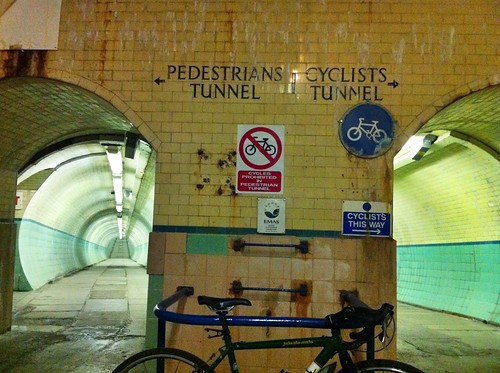
While cyclists were largely forgotten by town planners in the 1950s there were exceptions: new towns Stevenage, Harlow and Milton Keynes were veined with bike paths, and workers who lived in Jarrow and Wallsend were provided with the Tyne Pedestrian and Cyclist Tunnels, a wonderful piece of capital-intensive, protected infrastructure, still in use today. The tunnel was opened in 1951, sixteen years before the motor vehicle tunnel. At its peak, 20,000 cyclists and pedestrians used the tunnel each day.
Elsewhere in the UK, provision for cyclists was non-existent. Writing in 1958, Professor Sir Colin Buchanan, one of Britain’s key town planners and traffic engineers, said:
“The meagre efforts made to separate cyclists from motor traffic have failed, tracks are inadequate, the problem of treating them at junctions and intersections is completely unsolved, and the attitude of the cyclists themselves to these admittedly unsatisfactory tracks has not been as helpful as it might have been.”
Some bicycle advocates have suggested it was opposition of cycling organisations to the cycle path experiments of the 1930s that prevented national take-up of these paths. If only CTC and the NCU had supported the Western Avenue experiment, a Dutch-style cycle network might have later evolved, is the claim. In actual fact, cycling organisations had little to do with the failure of the bike path network. Ordinary cyclists didn’t use the paths because they weren’t very good paths, and post-war austerity meant no new paths were built, nor were existing ones improved to the standard that CTC and NCU said would be required. As well as the lack of investment from local and national Government there was also a lack of willingness to provide for anything other than motor-cars: post-war politicians and planners were deeply dismissive of cycling, blinded by the economic potential of mass motoring. Cycling, it was felt, was outmoded, not suited for the modern era, a motor era. And the great British public seemed to agree: people wanted to own and drive cars.
The highly-influential Traffic in Towns report of 1963 – the report by Professor Buchanan which town planners used to create urban motorways and pedestrian zones separated from motor traffic – mentioned cyclists only in passing, and clearly believed, desired even, that urban cycling would soon wither to nothing:
“We also considered the question of cyclists. Although in the mode of travel diagram for the year 2010 there is an allocation of movements to pedal cycles, it must be admitted that it is a moot point how many cyclists there will be in 2010…[This] does affect the kind of roads to be provided. On this point we have no doubt at all that cyclists should not be admitted to primary networks, for obvious reasons of safety and the free flow of vehicular traffic. It would make the design of these roads far too complicated to build ‘cycle tracks’ into them, nor would this be likely to provide routes convenient for cyclists in any case. It would be very expensive, and probably impracticable, to build a completely separate system of tracks for cyclists.”
Post-war austerity froze many of the recommendations in the Alness report of 1939, including the provision of bike paths, but post-war austerity couldn’t be blamed for the total lack of interest in bike paths in the 1950s and beyond.
Mass motoring was the real culprit. Buchanan’s Traffic in Towns wasn’t just influential in Britain. In the Netherlands – a country with a strong history of cycling, where national identity was tied up with cycling – the Buchanan report (commissioned by transport minister Ernest Marples, a touring cyclist and CTC member) inspired town planners to reign back the car in residential streets.
While in the UK Buchanan’s ideas were used to construct flyovers, in the Netherlands he inspired ‘residential yards’, the famous ‘woonerf’ of Niek De Boer, professor of urban planning at Delft University of Technology and the University of Emmen. Traffic engineers in the Netherlands tamed the car (and improved the bike path network); traffic engineers in the UK designed only for the car.
+++++++++++
EVIDENCE GIVEN TO THE ALNESS COMMITTEE, 1938
Mr. Ried has created an extensive summary and extracts from the Evidence to the Inquiry material which the reader can find here - http://www.roadswerenotbuiltforcars.com/alnessreport/
# # #
About the author:
 Carlton Reid is the executive editor of monthly trade magazine BikeBiz, and editor of industry-funded website for newbies to cycling, BikeHub.co.uk. He’s also a travel journalist, writing for titles such as National Geographic Traveller. http://www.linkedin.com/in/carltonreid
Carlton Reid is the executive editor of monthly trade magazine BikeBiz, and editor of industry-funded website for newbies to cycling, BikeHub.co.uk. He’s also a travel journalist, writing for titles such as National Geographic Traveller. http://www.linkedin.com/in/carltonreid# # #
About the editor:

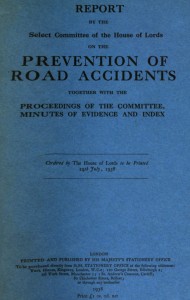



No comments:
Post a Comment
Thank you for your comment. You may wish to check back to the original entry from time to time to see if there are reactions to this. If you have questions, send an email to: editor@worldstreets.org